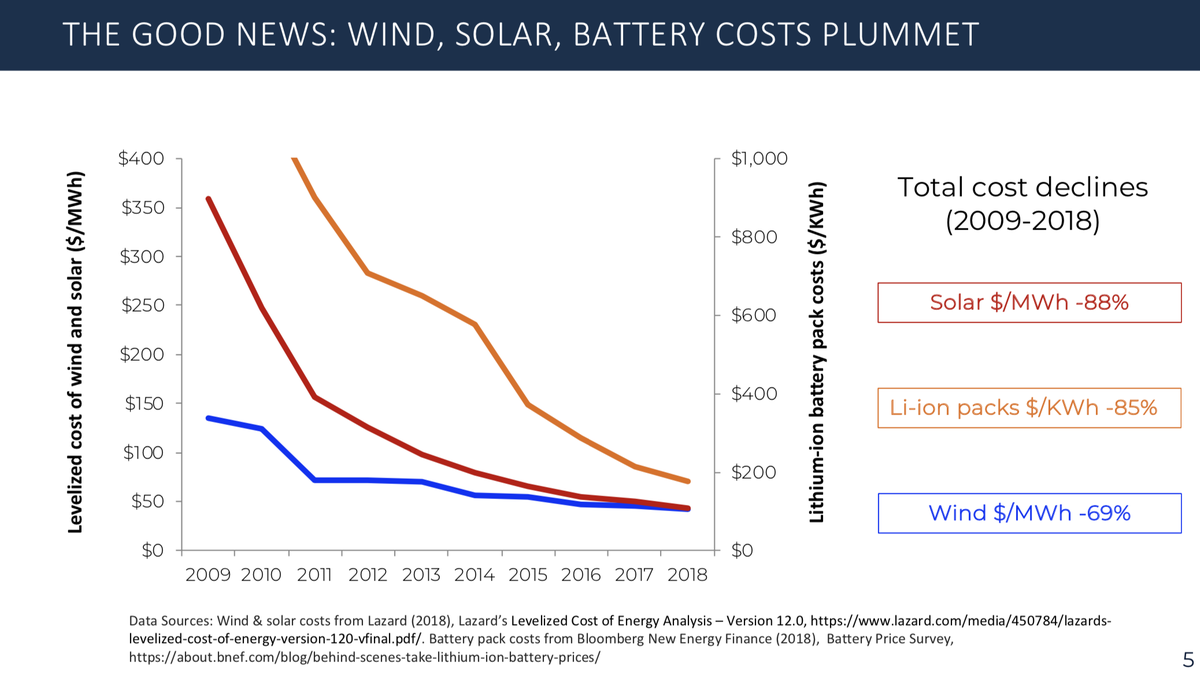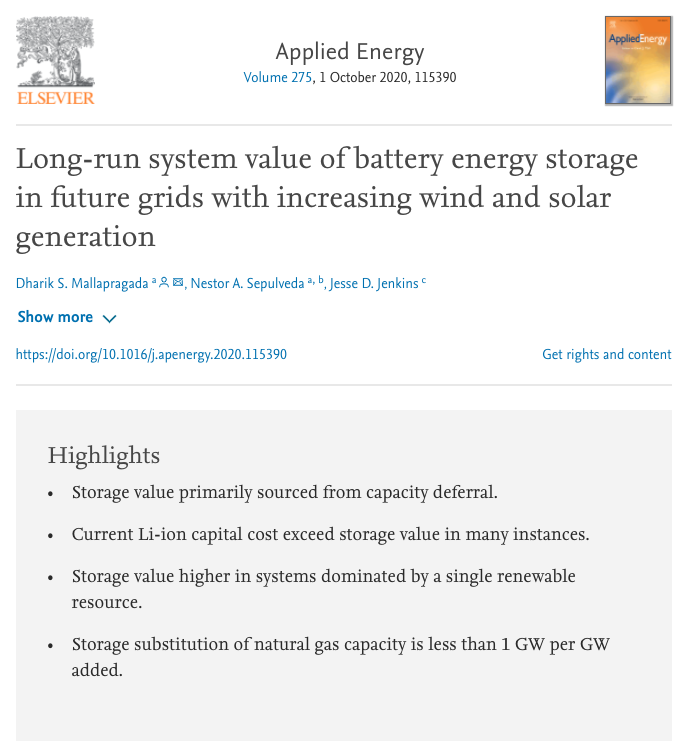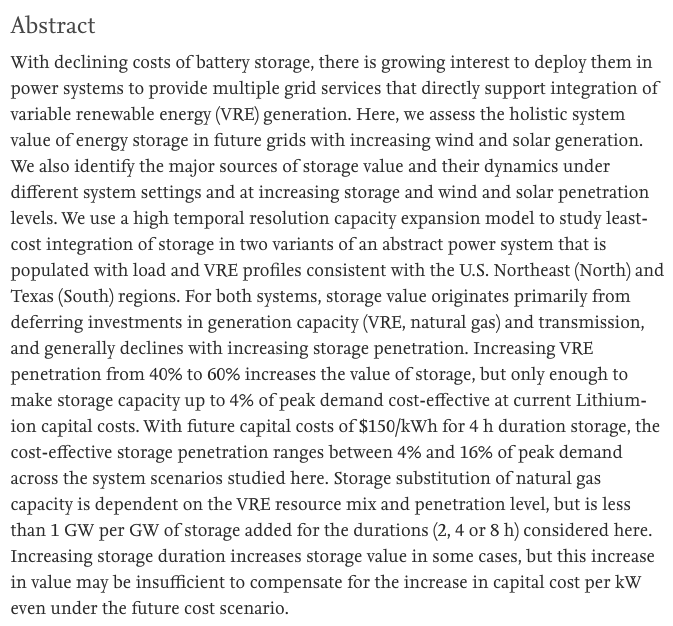
In @nytopinion, @JustinHGillis & @oboylemm argue it is time for U.S. electric utilities to stop investing in new natural gas-fired power plants. nytimes.com/2020/11/12/opi…
They're right (with a few exceptions). Here's why...
They're right (with a few exceptions). Here's why...
We already have over 540 gigawatts of natural-gas fired generating capacity in the U.S. today. That's enough to meet about 2/3 of our nationwide peak in electricity demand. That's plenty of capacity to help manage the variability of weather-dependent wind & solar as they scale up
Those existing natural gas power plants will play a key role in the near-term as what I've termed "firm" generating capacity: available on demand (dispatchable), any time of the year, for as long as needed. (For more on firm generation, see doi.org/10.1016/j.joul…)
Firm capacity provided by existing gas plants will make it possible to rapidly shutter ~250 GW of coal plants responsible for 60% of power sector CO2 by 2030, which would avoid about 100,000 premature deaths (aka real Americans killed by coal power!). Shuting coal is priority #1.
If we're serious about using natural gas as a "bridge" fuel, that bridge needs to start arcing down to the other side. Modeling @Princeton of a net zero transition for the U.S. shows we need to REDUCE gas-plant capacity nationwide ~5-15% by 2030; power generation falls ~20%.
In short, if we're serious about decarbonizing the power sector and building a 100% clean electricity system -- and most major utilities profess to be serious (see map catf.us/2020/10/state-…) -- we need to see a peak in nationwide natural gas power capacity very soon.
Specific regions could build net new gas capacity, but any such proposals should have a high burden of proof and be evaluated on case by case basis. I suggest the following criteria are all met...
(1) not in places already off coal (like New England or California);
(2) only as part of utility sector-wide commitment nationwide decline in gas capacity;
(3) only where necessary to replace coal; and...
(2) only as part of utility sector-wide commitment nationwide decline in gas capacity;
(3) only where necessary to replace coal; and...
(4) Only if new plants are built ready for later use of high hydrogen combustion (80-100% by energy) or carbon capture OR they are amortized over <20 years and prepared for early closure by 2040 (e.g. if prepared to zero out emissions by ~2040).
Additionally, if the electric sector wants to rely on gas as a bridge fuel over the next decade or two, and be leaders in decarbonization as they claim, they have to take responsibility for upstream leakage of methane --a potent greenhouse gas-- associated with the gas they burn.
This is something that Ben Fowke, CEO of @xcelenergy and Chairman of the Edison Electric Institute (the private utility trade group) talked about at the @AndlingerCenter Annual Meeting during a panel of utility CEOs I moderated on October 30 (acee.princeton.edu/2020-annual-me…)
In particular, electric utilities as major purchasers of natural gas should establish a clean gas standard: utilities take responsibility for pressuring gas producers and govt to clean up gas supply chain & cut methane emissions to 1% or less.
Many electric utilities are of course also natural gas utilities, and they have to take direct responsibility to reduce downstream gas pipeline emissions under their purview.
If methane leakage is large it greatly diminishes the climate benefits of natural gas over coal.
If methane leakage is large it greatly diminishes the climate benefits of natural gas over coal.
Finally, the utility sector needs to play a leading role in developing -- + calling for government support -- for a large-scale clean (zero carbon) hydrogen production sector (harnessing biomass and gas w/CCS & clean electricity) to fuel their combustion turbines in the future...
.. and in planning, financing, and building a national CO2 transportation system to enable retrofit of existing gas plants with CCS, where that makes economic and environmental sense. Utility leadership is key.
I'll wrap this up here, but from where I sit, if we're serious about gas as a bridge to a 100% clean electricity system, the above principles should be embraced by utilities -- and used by regulators, consumer advocates, and NGOs to hold the sector to its green promises. /END
@threadreaderapp unroll please
• • •
Missing some Tweet in this thread? You can try to
force a refresh





